A Local’s Guide to Razor Clamming on the Washington Coast
For the most up-to-date clam digging dates, locations, and tides head to our events page.
For those who love a hot cup of coffee on a brisk morning, catching the sunrise, and soaking in the misty sea air, razor clam digging on the Washington coast is an absolute must. When the tides are just right and the season opens, folks from all over flock to sandy Washington beaches bucket and shovel in hand.
We sat down with Buck, long-time local and owner of Buck’s Northwest (now closed) here in Seabrook and asked him what makes clamming so special.
“Everyone enjoys digging clams whether you eat them or not,” said Buck, “and Seabrook is my favorite place to dig.”
Buck has been clam digging on the Washington coast since he was 8 years old. He remembers his very first expedition. His neighbor brought him and some friends out early in the morning for a dig. The next day, they enjoyed fresh clam chowder made with their harvest. To this day, clam chowder with bacon is still his favorite way to eat razor clams.
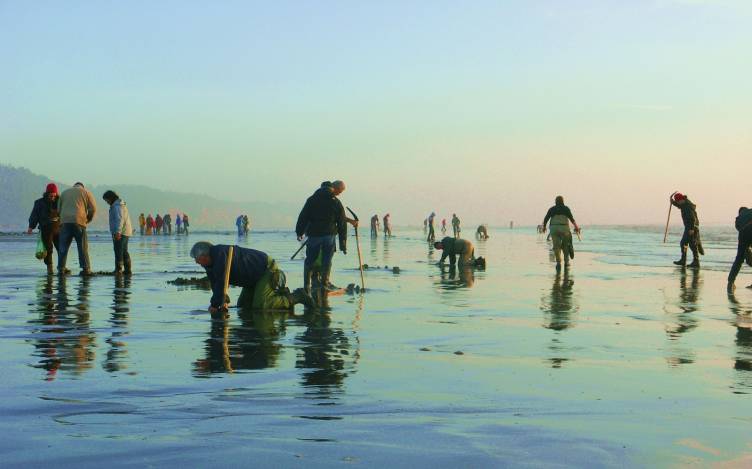
WHERE AND WHEN TO GO
During the peak of clamming season you’ll see a parade of lights starting as early as 4:30 in the morning. Donning headlamps and rubber boots, clammers take over the beach and start the dig. When evening digs opening up it isn’t uncommon to see a clammer or two out until 12:30 at night.
The exact time for clamming changes depending on the tides. Your best bet is to head out to the beaches about an hour before low tide. As for where to go, you have miles of coastline to choose from. There are five distinct razor clam beaches that you can visit. Long Beach, Twin Harbors, Copalis Beach, Mocrocks Beach (the beach in front of Seabrook), and Kalaloch all permit clamming. Get the latest status of Washington’s razor clamming beaches here.
Each season, thousands of couples and families come to Seabrook, which is part of Mocrocks Beach, to dig for clams. Buck offers guided tours for those looking for a successful first dig or learn more about the process. The tour takes guests down to the sandy beaches directly below Seabrook. This is Buck’s favorite place on the entire coast to go clamming. “Seabrook’s beach is too far from Roosevelt to have the driving crowds and it is isolated by Joe Creek to the north. Together it creates a peaceful setting that you won’t find elsewhere,” noted Buck.
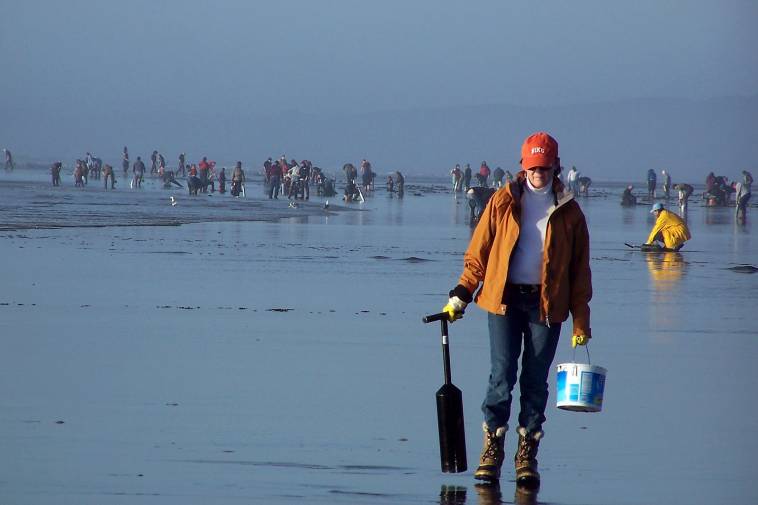
Permitting and Daily Limits
Similar to hunting and fishing in the state of Washington, you need to purchase a permit before you hit the sand. The permit process ensures that the clams are not overharvested and that each year brings a healthy population back to the beaches.
The permits also signify that the clams are safe to eat and do not contain high toxin levels. When tested clams present a high toxin level, permits are halted until the levels drop back down. Each person needs a permit to dig and can only harvest a certain number of clams per day.
You can buy permits, check toxin levels, and plan your trip online at the Washington Department of Fish and Wildlife.
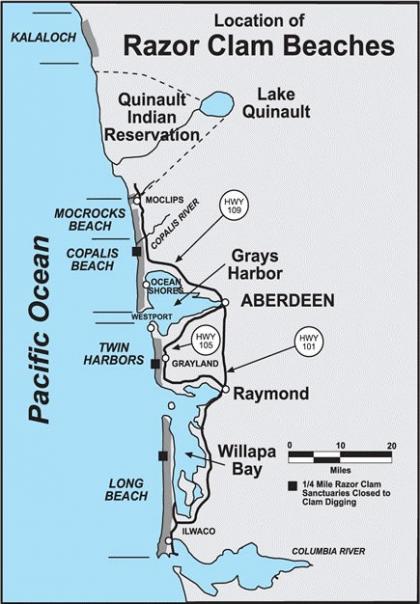
Gear Up
Sturdy boots and a good rain coat are necessary for any outdoor adventure here in the Pacific Northwest, but you’ll need a little more than that to start collecting your clams. On the beach you’ll see two main types of tools used to pull up the clams. A shovel can be used by more experienced diggers but you’ll find a lot of people using a special clam gun.
To use the gun, shove the tube into the ground, cover the straw with your finger to create suction, and pull out. Inside the tube you’ll have all of the sand (and hopefully clams) that were in the ground. Sometimes you’ll pull up a gorgeous looking razor clam, but other times you’ll just remove the surface sand and find the clam at the bottom of your hole.
You’ll also want to carry a bucket or bag with you to hold your findings. If you’re getting an early-bird start or heading out after dark you’ll need a light. Buck prefers an old fashioned propane lantern. “You need a low angle soft light to illuminate the imperfections in the sand which mark the clam’s location,” explained Buck, “I hold my light down by my feet which helps me see every little divot.”
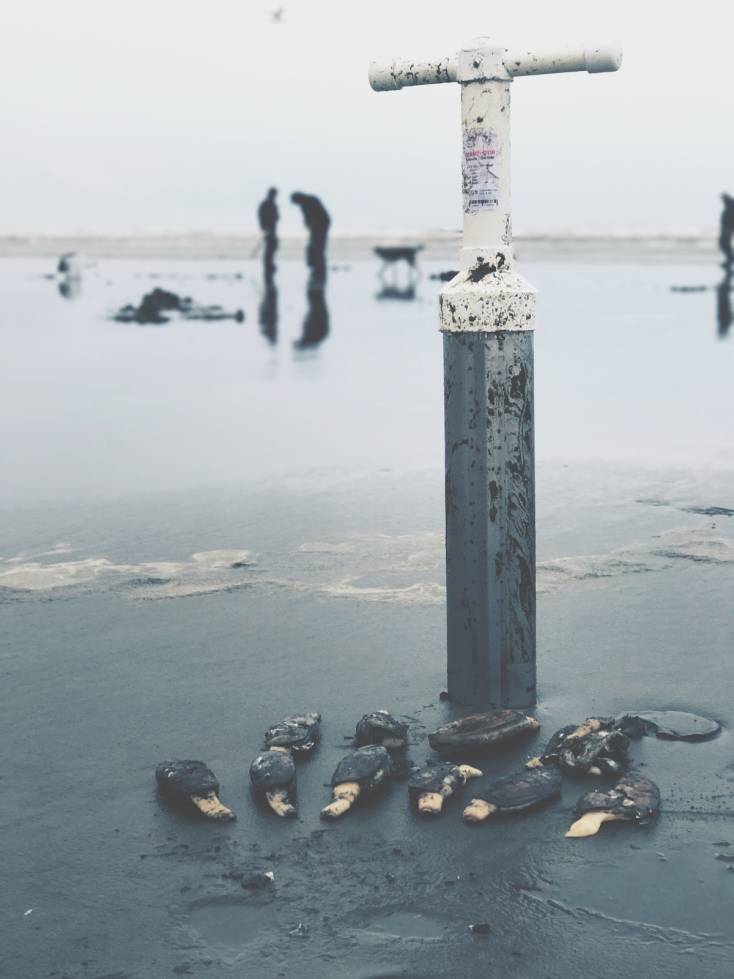
Diggin’ Time
While you could test your luck and start digging anywhere along the beach, there are subtle signs in the sand where clams have burrowed underground. Keep an eye out for these three deviations in the sand and you’ll be a clamming expert in no time.
Dimples are the most common but are extremely small and subtle. When agitated, the dimples can collapse and form the more noticeable keyholes which look like a small dot in the sand. Doughnuts are dimples or keyholes but with a raised mound of sand around them resembling a doughnut. Sometimes, the tide can wash over any deviations in the sand, so just because there’s no signs doesn’t mean there isn’t a juicy clam underneath.
“The best digger I’ve seen yet was a vegan grandmother who adamantly refused to eat or clean the clams. But almost like a magician she could wave her hand over the sand and sure enough there was always a clam underneath,” recalled Buck. “It just goes to show you that anyone can have a blast clamming.”
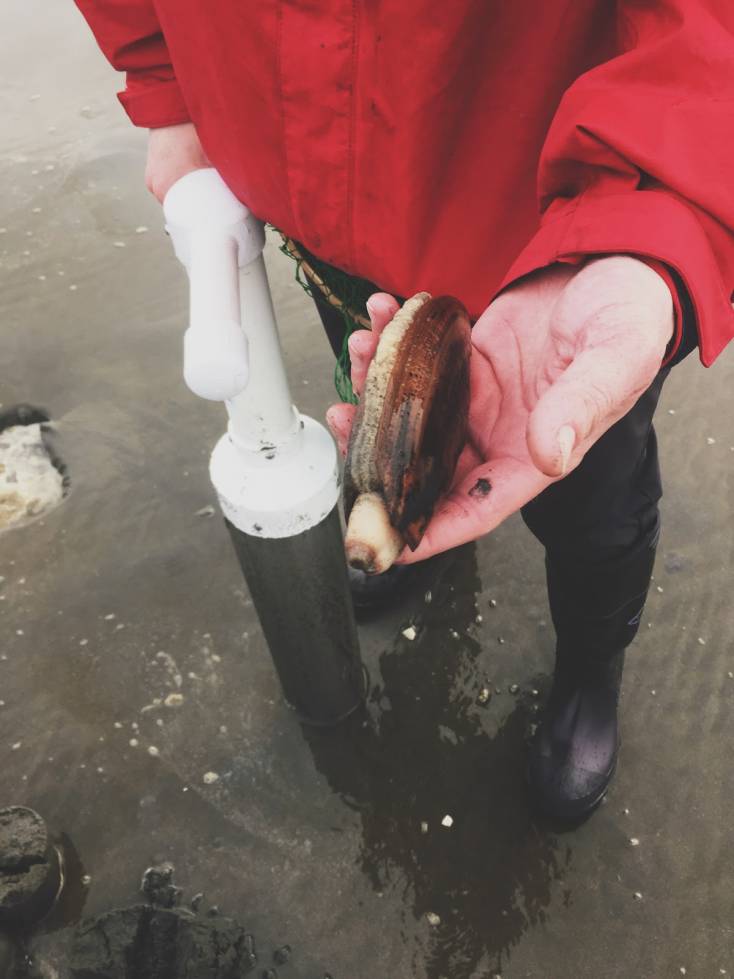
Cleaning Your Clams
Digging for clams is just the beginning of the fun. Cleaning the clams and separating the meat takes a little bit of knowledge and handwork, but after a couple of clams you’ll surely get the hang of it.
Blanching is the best way to open and remove the sharp razor clam shell. A quick dunk in boiling water followed by an ice bath reveal the clam while halting any cooking of the meat.
Buck recommends a good pair of kitchen scissors and a paring knife to clean your meat.
Did you know that Seabrook has a clam cleaning station outside of The Arcade? Bring your harvest and clean away!
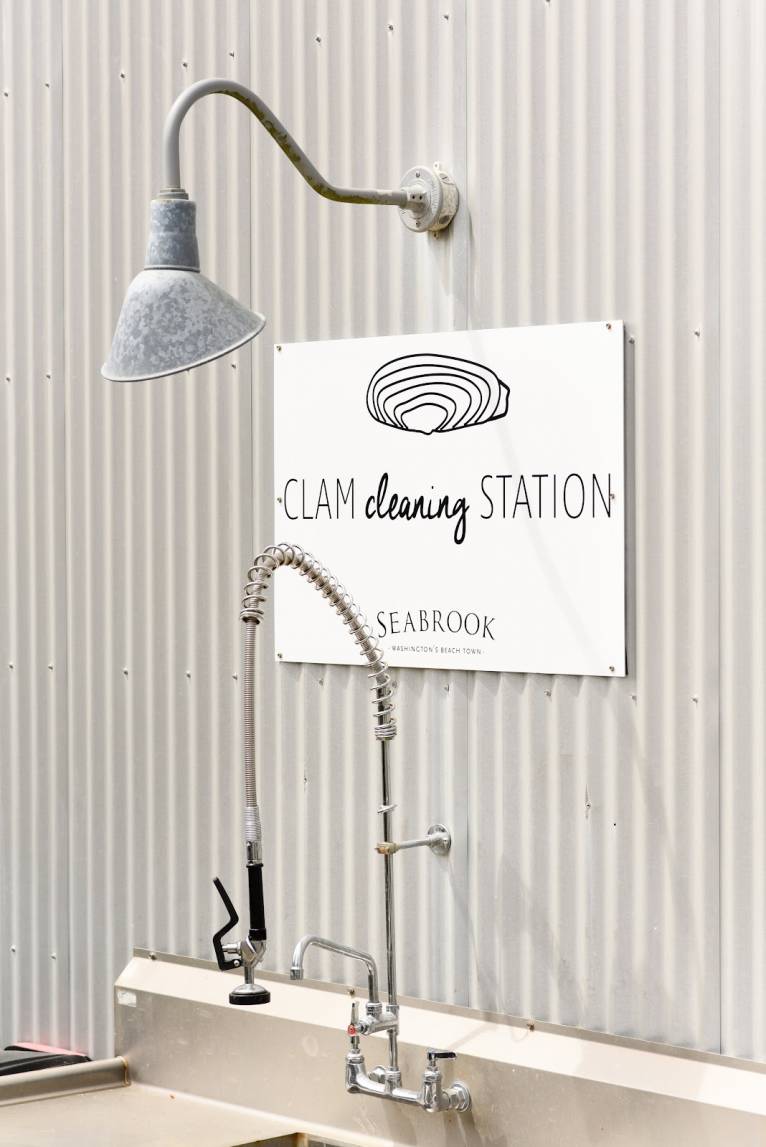
Cooking
A question we hear often is ‘What’s the best way to eat these?’ but that’s all up to personal preference. We’ve seen them served up every way imaginable. Battered and deep fried until crispy, sliced up and slow simmered in chowder, atop a pizza, baked into a fritter, grilled with butter and garlic, or raw with salt and lemon. There’s no wrong way to eat them.
Buck’s favorite way to enjoy clams is a classic chowder with bacon. It takes him back to his very first dig. On a rainy day, nothing sounds better. But if you’re looking for something a little out of the ordinary, try making a clamburger.
“It’s a spin on the classic crab cake,” explains Buck, “You roughly chop your razor clams, mix with some aromatics and breadcrumbs, and form a patty. After a quick fry in butter you serve it on a toasted bun with mayo, lettuce, and a slice of tomato. It’s quite dank.”
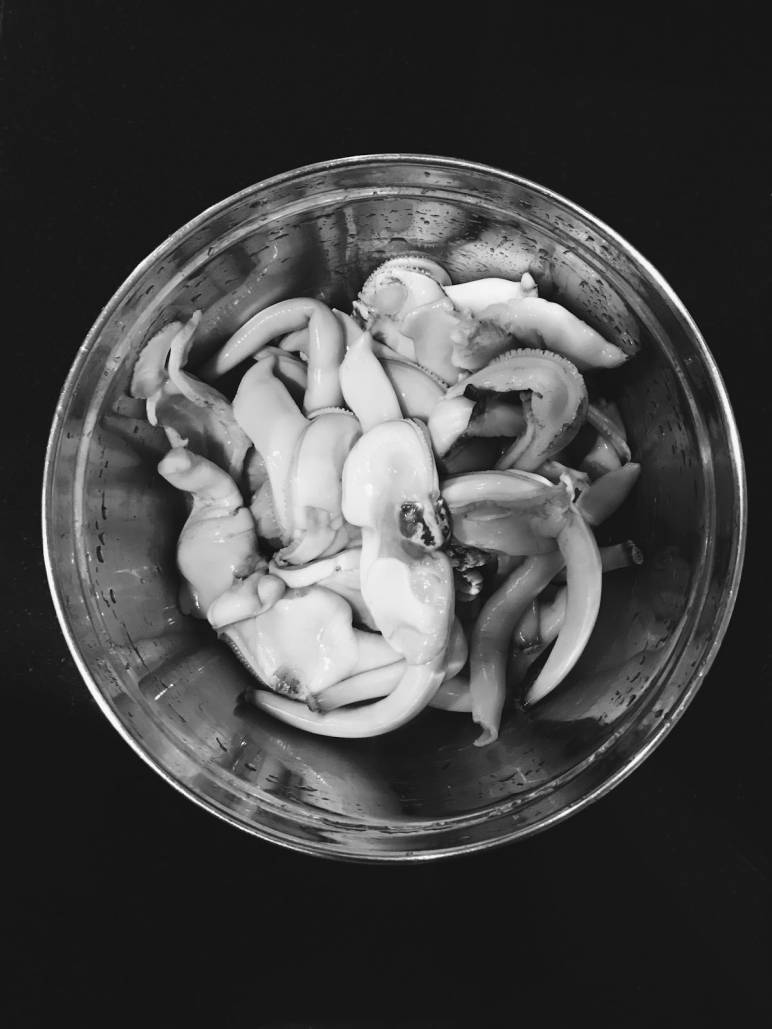
Enjoy!
No matter how you serve it, you’ll surely end up with clean-licked plates and more than a few stories to share. Snuggle up on a misty afternoon with a bowl of chowder, grill up a few at your next BBQ, or make a clamburger part of your Seabrook tradition.
Clamming is a family-friendly, dog-friendly activity that just about anyone can do. If you can build a sand castle, you can dig for clams. Come to Seabrook and set out for a day of adventure.
